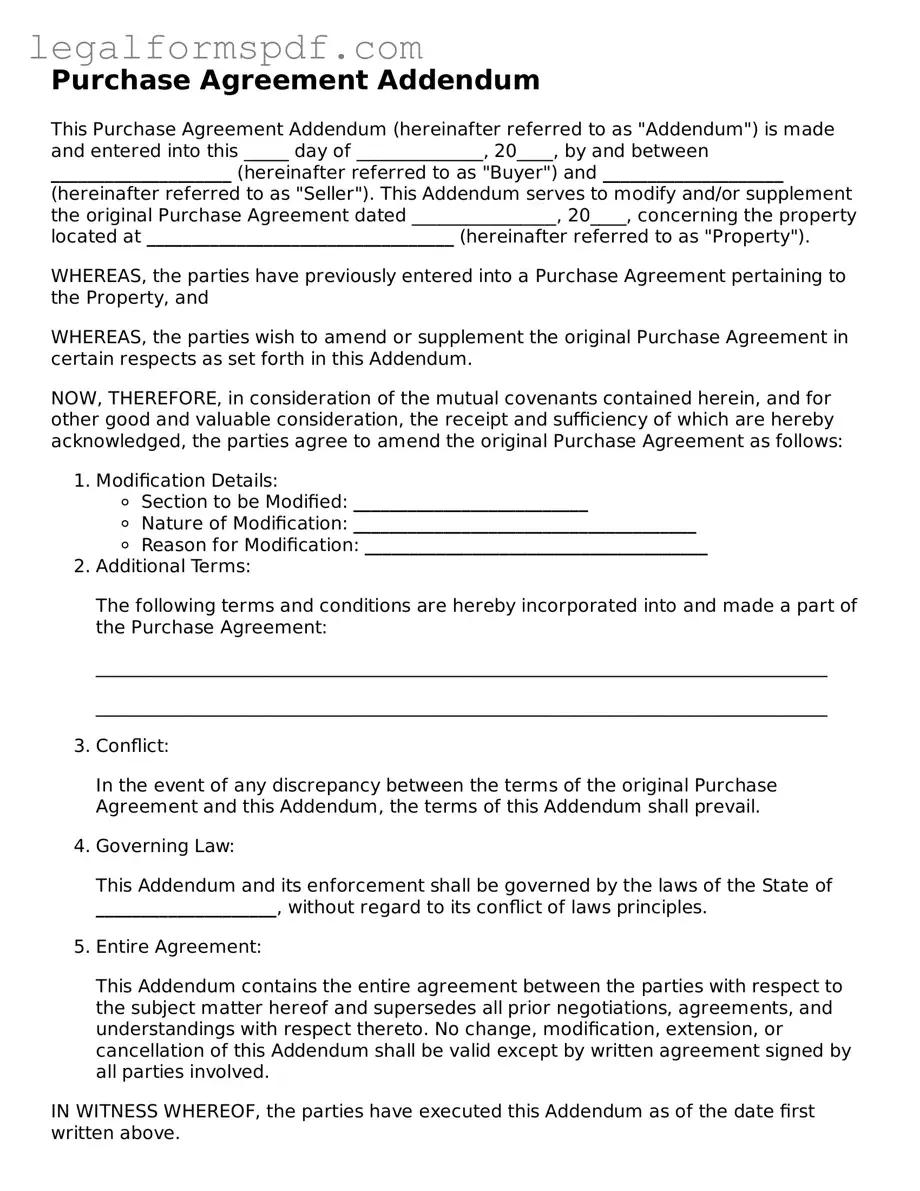What is a Purchase Agreement Addendum?
A Purchase Agreement Addendum is a legal document that makes changes or additions to a previously agreed-upon purchase agreement. It allows both parties to modify the terms, such as the purchase price, closing date, or inspection requirements, without needing to draft a new contract from scratch.
When might one need to use a Purchase Agreement Addendum?
One might need to use it when either party wants to change the terms of the original purchase agreement after it has been signed. This could be due to a variety of reasons such as discovering issues during the property inspection, needing to extend the closing date, or adjusting the sale price.
Do both parties need to agree to the Addendum?
Yes, both the buyer and the seller must agree to any changes made by the Addendum. The document must be signed by both parties to be legally binding.
Can a Purchase Agreement Addendum be used to cancel the original agreement?
Yes, an Addendum can include terms that effectively cancel the original agreement. However, the mutual consent of both parties is required. Typically, a separate cancellation agreement is recommended for clarity.
How does one create a Purchase Agreement Addendum?
To create an Addendum, clearly outline the specific changes to the original purchase agreement, including the effective date of these changes. All parties should review the Addendum for accuracy, agree to the changes, and then sign the document, ideally in the presence of a notary.
What should be included in a Purchase Agreement Addendum?
The Addendum should include the date, the names of all parties involved, the address of the property in question, and detailed descriptions of all changes to the agreement. It should also reference the original agreement date and clearly state that all other terms of the agreement, not mentioned in the Addendum, remain unchanged.
Is a lawyer required to draft a Purchase Agreement Addendum?
While not necessarily required, consulting with a lawyer can ensure that the Addendum is legally sound and that all changes are clearly outlined and enforceable. This can help prevent misunderstandings or legal issues down the road.
How is a Purchase Agreement Addendum different from an amendment?
The terms "Addendum" and "Amendment" are often used interchangeably in the context of real estate. However, technically, an Addendum is used to include additional information or clauses that were not originally in the purchase agreement, whereas an Amendment changes existing terms of the agreement.
Does a Purchase Agreement Addendum need to be notarized?
While notarization is not always required, it can add a layer of authentication to the signatures on the document, thereby reducing the possibility of disputes regarding the validity of the Addendum.
What happens if one party does not adhere to the terms of the Addendum?
If one party fails to follow the terms outlined in the Addendum, it may be considered a breach of contract. The non-breaching party could seek enforcement of the agreement through legal means or may be entitled to damages resulting from the breach.
